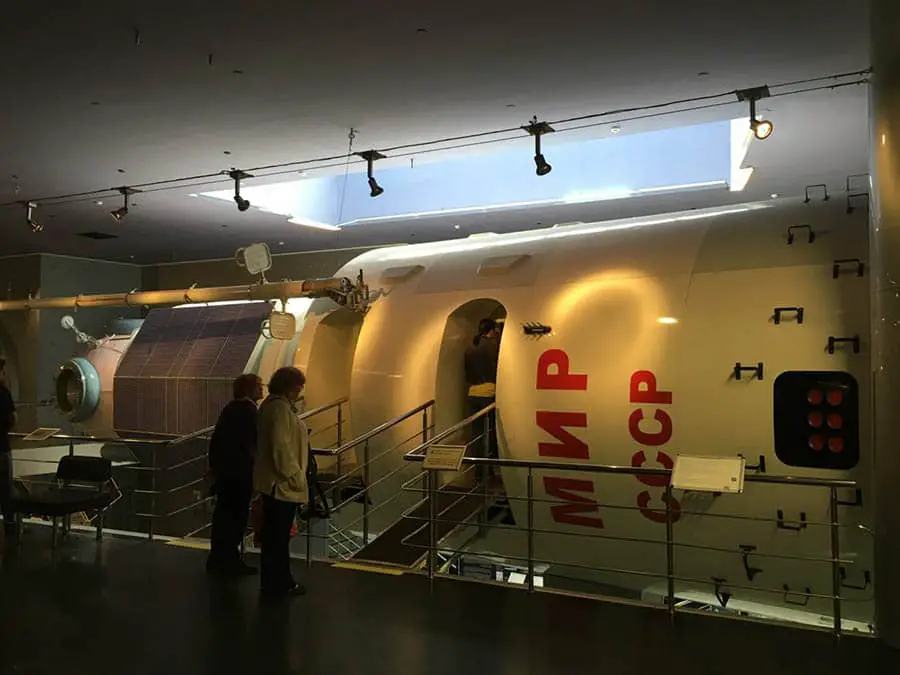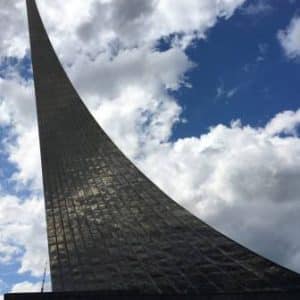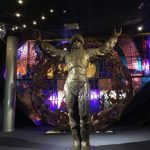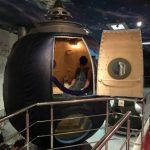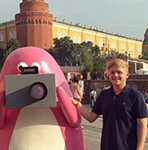The Moscow Space Museum
Prospect Mira, 111
Free with student ID
(500 rubles otherwise)
The Moscow Space Museum rivals any other cosmonautic museum in the world for the sheer size of collection of memorabilia relating to the early days of space travel and modern advancements, as well as models of space craft that countries from all over the world have flown into space at one point or another since mankind first journeyed into space. Add the fact that entry is free for students, and this museum is an absolute must-see for anyone interested in the history of space travel or just in seeing what constituted a large part of the rivalry between the Soviet Union and United States in the 20th century.
After taking the metro to VDNKH (ВДНХ) in the Northeast of Moscow, it is impossible to miss the absolutely massive monument to Soviet cosmonauts that dominates the landscape of the area as soon as exiting the metro station. The monument is a nod to famous Soviet propaganda posters concerning the space race, which often featured a single rocket blasting into space leaving a noticeable, curved trail behind them to symbolize progress. The monument takes the form of this rocket and its trail, resting on top of a stone plateau with a mural of Soviet scientists and their achievements carved into its walls.
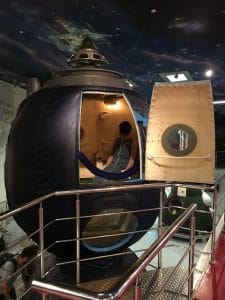
At the beginning of the exhibition, which is divided into parts and self-guided in a linear fashion with arrows on the floor that point out which hall is meant to be visited next, one can see some of the very first Soviet spacecraft and a large monument to the first man in space, the Soviet Union’s Yuri Gagarin. Gagarin remains a very important figure in the modern Russia national mythos and culture, and Russian cosmonauts even have a public holiday dedicated to them in the country. In this first hall, a large statue of Gagarin stands with arms outstretched, as if inviting one to witness the great achievements of Soviet aeronautical engineers. One can see models of the Soyuz-1 and its successors, some of the very first spacecraft ever launched by mankind, and other early satellites and capsules.
The next couple of halls gradually move through history and outwards from Russia. The second hall is full of medals and other honors won by some of the greatest Soviet and Russian pioneers of aerospace technology, as well as giving extensive biographies of their accomplishments. It also details their achievements in technological terms, describing exactly the revolutionary advancements they made in technology. Although all of the placards are in Russian, they are written in quite simple terminology and easy to understand.

The museum ends with some fantastic pieces of memorabilia and placards dedicated to American-Russian cooperation in space travel, an effort between the two countries that has fairly extensive and impressive history, especially considering the great rivalry they had during the space race of the Cold War. American spacecraft are ubiquitous throughout the last few halls, including models of lunar rovers and the Jupiter and Saturn model rockets that were launched into space by the United States from Cape Canaveral. Overall, with an abundance of information on the history of both Russian and international advancements in space travel, and incredibly affordable, I highly recommend a visit to the space museum.


